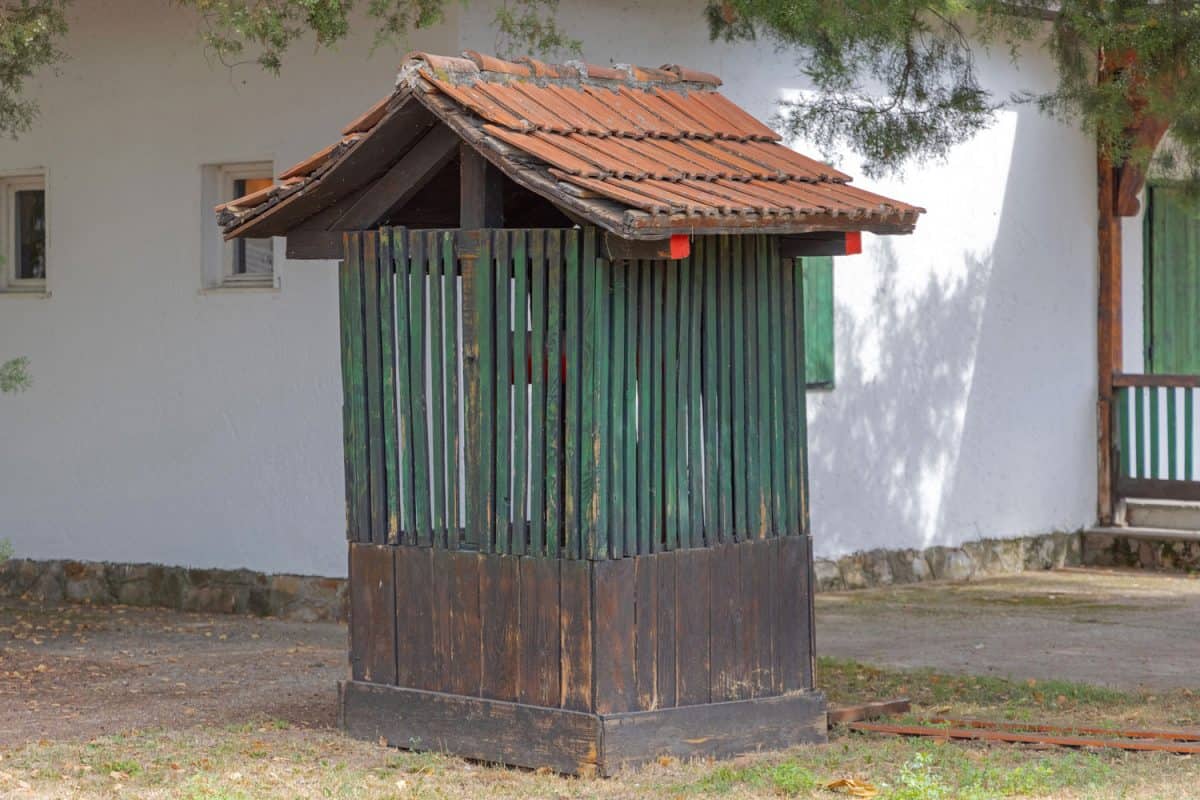Your well pump is the mechanism allowing you to get water from your well to the places it needs to be. If you just moved into a house with a well pump, or are thinking about installing one, you probably have questions on the care they require. Since these pumps sit above ground, typically above your well, have you considered adding a cover or added protection to your pump? We gathered our research to explain if covering your well pump is something you should do, and what this process may entail.
Yes, you should cover your well pump. Covering your pump protects it from weather elements, pest infestations, and vandals. This added protection reduces unnecessary and expensive damages, and extends the lifespan of your pump.
Now you know you should cover your well pump, but how is it done? Keep reading as we break down the steps to covering your pump, what materials you can use, and answer if winterizing your well pump is necessary.

How To Cover Your Well Pump
When covering your well pump, you want to enclose all the pump's components. These components include the pressure tank, any switches or other electronics, and the pump's casing. Your covering will protect each part and keep them nicely hidden with a decorative cover.
First, you need to choose your type of well cover. Aspects to consider when searching for materials include costs, aesthetics, accessibility, upkeep, and your current environment. Before buying or installing anything, you should review building codes for your location to ensure you do not need any additional paperwork, permits, or professional involvement.
You can buy premade covers, build your own, or involve your pump in a sitting area by utilizing a picnic table with a waterproof table cloth. You can take your cover a step further by with the addition of insulation and cooling or heating sources. There are many ways to cover your well pump, and choosing the material is the most involved step. We'll talk more about material options next.
What Do You Cover A Well Pump With?
There are many methods to cover your pump. One option is a natural look using a rock covering. These enclosures have been built to look like natural stone but are actually lightweight composites. Rock coverings offer security with little maintenance and low costs.
Moreover, they are easy to install and come in various shapes and shades. These natural-looking covers tie in perfectly with just about any landscape.
See this rock covering for small well pumps on Amazon.
A weather-tight option for protecting your pump is the use of well pump houses. These enclosures can be built to look like mini houses, garages, or an old-fashioned outhouse.
You can take the extra steps to create a DIY pump house for a unique addition in your yard that is completely customizable. Another positive to this type of pump cover is that it offers some sound reduction if you have a loud pump, or it is close to your house.
Have a look at the video below showcasing a DIY well pump cover that resembles a mini barn.
Read more on our blog post, “Does A Well Pump Affect Water Pressure?”
How Do I Protect My Well Pump?
Any pump cover or enclosure will offer protection for your well pump. These covers range from simple, waterproof covers to involved built enclosures. If you live in woody areas where insects and pests are always present, consider offering some protection against this aspect.
Ants specifically can get into your pump's switches and electrical boards and cause damage. To protect against this, you can wrap your well pump switch with electrical tape, and use silicone calk to cover any cracks or edges.
Get waterproof, temperature resistant electrical tape here on Amazon
Do you live in a colder environment or one with freezing winters? In these environments, you need to consider winter protection for your outdoor well pumps. On top of pump covers, there are additional steps for the pump and surrounding pipes that you will need to consider.
Additionally, your pump needs protection from sediment build-up, droughts, power surges, and being overworked. One way to protect your pump from being overworked is ensuring the pump size is appropriate for the water it is expected to deliver.
How Do You Insulate A Well Pump Cover?
There are various insulated well pump covers you can find online or in your local handy shop. These covers can go over your pump, followed by your actual well pump cover or enclosure.
An insulated cover typically comes in polyester, cotton, or oxford fabrics that won't tear, crack or peel. An insulated cover offers protection from severe snow, rain, heat, and sun exposure, making it useful for all seasons.
You can find an insulated pump cover here on Amazon.
There are plenty of options for those who enjoy a DIY job. You can use materials like foam board, cell foam spray, or fiberglass insulation. In some projects, using mixed materials is ideal. You will need to get exact measurements from your well pump enclosure to see how much material will be required.
Materials such as foam boards need to be cut accordingly. Depending on which material you are using, you will need to use adhesive glues, staples, or other means to get your insulation to stay put.
Insulation foam boards can be found here on Amazon
The video below shows a DIY well pump cover that uses foam boards and spray foam as the insulation and liquid nails as the adhesive.
How Do You Keep Outside Well Pump From Freezing?
Once you notice the fall leaves coming down from the trees, it is time to start setting your well pump up for winter. The water in your well won't freeze, but the pipes and your well pump are at risk of freezing when temperatures drop below 40 degrees Fahrenheit.
Utilizing a well pump cover and insulation techniques that we have mentioned should keep your well pump from freezing. Additionally, you should insulate the pipes coming from your well pump. All pipes exposed to the outside need to be insulated.
Frozen water in the pipes can lead to decreased water pressure, increases the likelihood of your pump freezing, and can cause pipes to eventually burst. You can insulate outside pipes using pipe-specific insulation such as closed-cell foam tubes.
Have a look at these insulation tubes for your pipes here on Amazon.
Are you living in an area with extreme winds or prolonged cold exposure? You can take extra precautions with your insulation by adding a heat strip or wrap near the switches or transducers of your well pump. Aluminum foil tape is an excellent option for added heat and insulation.
You can find a roll of aluminum foil tape here on Amazon.
Do You Have To Winterize A Well Pump?
If you live in an area that will reach freezing temperatures, even for short periods, then yes, you do have to winterize your well pump. Taking these precautions can save you tons when it comes to repairs, and will elongate the lifespan of your well pump.
Winterizing a well pump that is in constant use can be done with your insulated well pump cover and pipe insulation. If you are closing up a home for the season, or are going out of town for a period of time, there are extra steps you will need to take to keep your pump from freezing.
These steps include turning off the pump's power and emptying any residual water. You want to remove all water from your pipes and pumps in this process. If water gets left within the pipes and freezes, you might come back to a damaged system.
Read more on our blog post, “How To Keep Laundry Room Pipes From Freezing”.
In Summary

You should cover your well pump to protect your equipment from weather elements, pests, and vandalism. Waterproofing and insulating well pump covers can help keep your equipment safe and working. Insulating or winterizing your well pump will stop water from freezing in your pump or pipes, decreasing damage and keeping your water flowing. We hope you found this article insightful when it comes to caring for your well pump.
Are you looking for more insights when it comes to managing your water supply? Have a look through our blog post, “Best Pipe To Use For Underground Water Line? Here's What Experts Say”.





